I joined BV in January 5th 2008, just over ten years ago. My role began as Mpilanja gony, the Malagasy words for Field Staff, and now, in 2018, I am stepping up as the Deputy National Blue Forests Programme lead! Ten years is quite a long time, but working for Blue Ventures has made it feel like not so long.
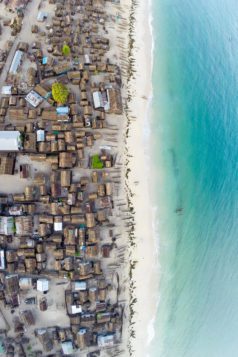
Andavadoaka, southwest Madagascar | Photo: Garth Cripps
My first experience of BV was being interviewed by Garth in Antananarivo in late 2007. He offered me the position, which was my first permanent job since completing my Marine Sciences degree at the University of Toliara. It was a great Christmas gift!
The position was based in the coastal village of Andavadoaka, BV’s first site in Madagascar. In those days only four of us were working on the conservation projects, which is hard to believe when you look at the conservation team today!
My role was to provide technical support to the communities we worked with in order to help them sustainably manage their octopus fisheries and mangrove habitats. I remember the wonderful moment that year when the village of Vatoavo decided to permanently protect some areas of their mangrove forest.
During this time I also assisted the women’s association in Andavadoaka by promoting alternative ways of earning income besides fishing for octopus and sea cucumbers. I have a talent in needlework, so I trained them in how to sew clothes and hammocks, and assisted in promoting the pilot sea cucumber farming project.
Feeling that my English speaking was not good enough at that time, I worked to improve my English by translating for the BV medic every Thursday at the Andavadoaka village clinic where he provided Family Planning services. BV’s community health programme also recently celebrated its 10 year anniversary!
The next big development in Andavadoaka was our community based monitoring (CBM) model, in which we trained community members to conduct natural resources and habitat monitoring. By monitoring both inside and outside of protected areas and no-take zones, the communities were able to assess the effectiveness of their resource management.
I developed a simplified CBM method, which enabled community members with lower levels of education to participate, and thanks to this I was invited to attend the 6th WIOMSA conference in Reunion Island to present how this work was enhancing community buy-in to natural resources management. This was my first trip to andafy, which means “outside of Madagascar”.
In 2010, I moved from Andavadoaka to Belo sur Mer, BV’s second site in Madagascar. While the location of my work changed, my job did not; I still provided technical support to both the mangrove-dependent local communities and the manager of the Kirindy Mitea National Park in order to sustainably preserve their fragile mangrove ecosystems. For my work supporting coastal communities, I was recognised in an IUCN series of natural born heroes, an unexpected honour!
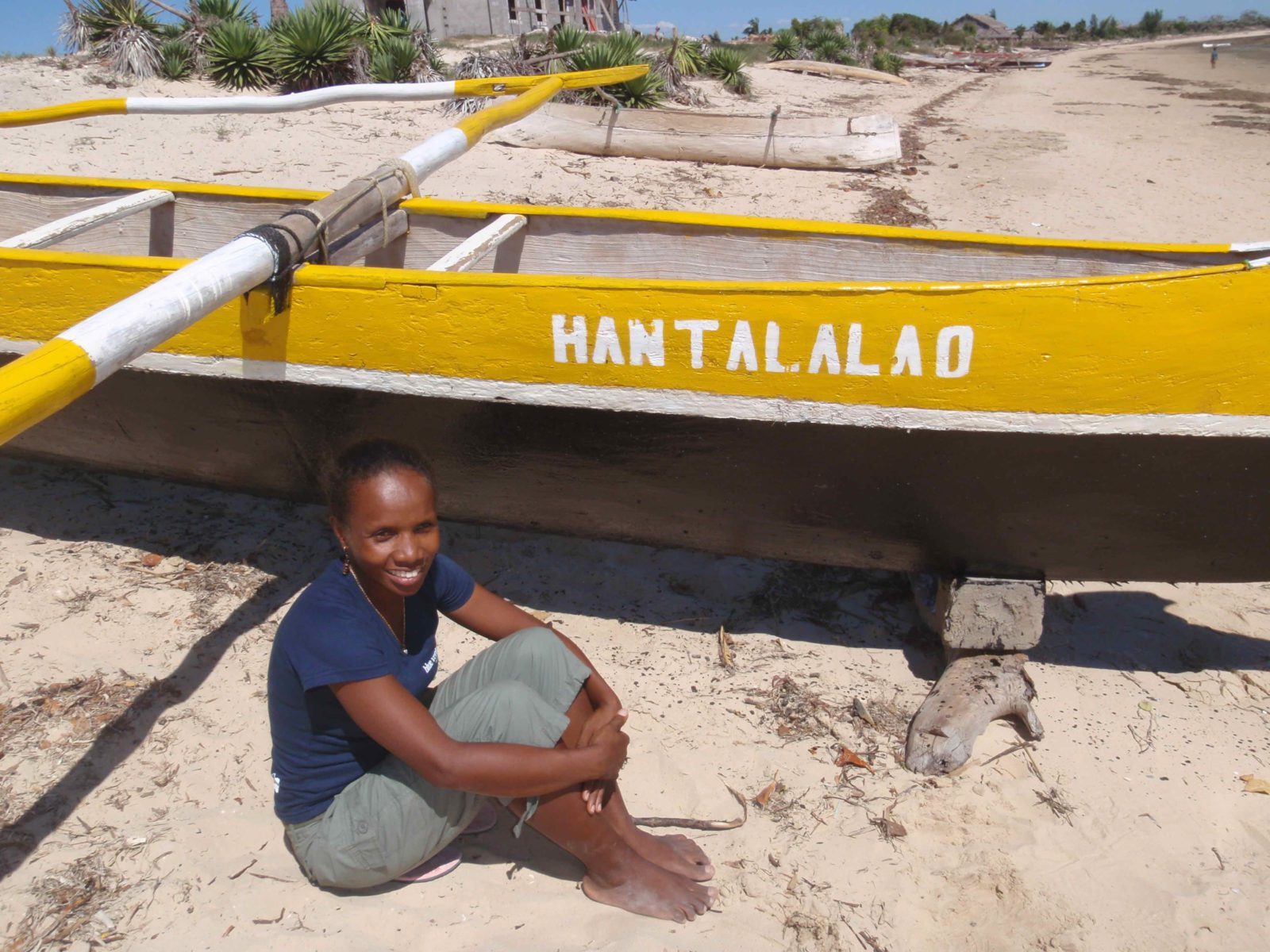
Lalao in Belo sur Mer, 2010 | Photo: Charlie Gough
2011 was a big year, both in my career and for BV, as it was the year that our blue carbon programme – Blue Forests – was born. This programme aims to support community-led mangrove conservation by using international carbon markets to monetise the huge amount of carbon stored in mangrove forests and transferring this value to our community partners.
In my new role as Blue Carbon Research Assistant, my work was purely science-based, focused on performing carbon stock inventories in order to work out how much carbon is stored in Madagascar’s mangroves. This allowed me to take a little breather from doing community consultations and village meetings as I had done for the preceding three and a half years, but this by no means meant that I had forgotten the communities! By showing the difference in carbon stocks between areas with mangrove conservation and areas without, the value of community-led mangrove conservation increases. This research also informs national decision makers, helping them to create better policies for mangrove management.
I spent all of 2012 measuring trees in mangrove forests between Ambanja and Mahajamba in the Northwest. I can say from much experience that measuring trees is normally really fun and relatively simple but walking through mangroves can sometimes be neither… Often moving from one plot to another took us more than an hour, and we sometimes had to drag ourselves through deep mud. Throughout my first five years of working for BV, my legs always had scratches from walking through mangrove forests.
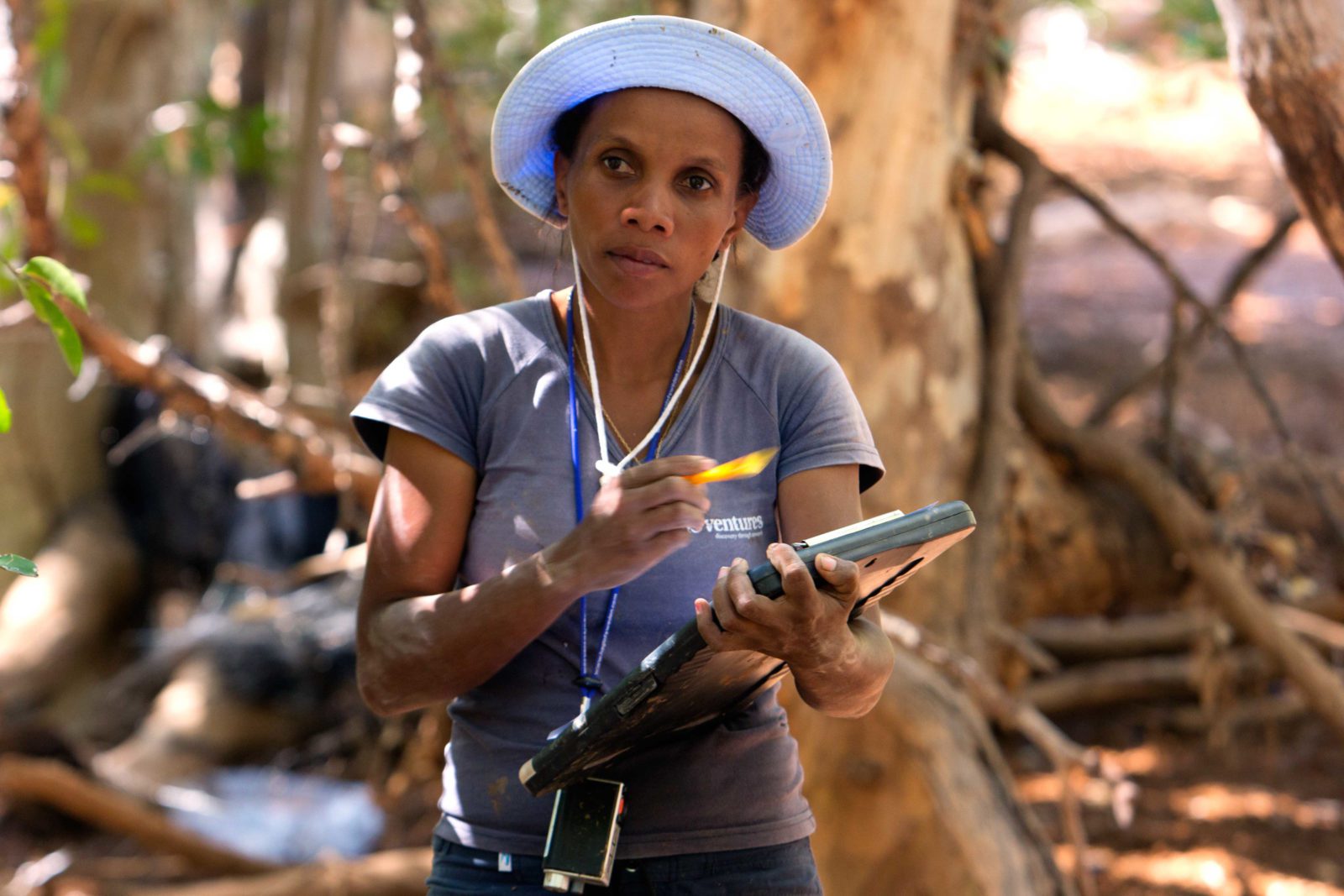
Lalao recording data | Photo: Garth Cripps
The toughest moment that year was in February, on a carbon project scoping visit near Ambanja. It was pouring with rain as we travelled in a small pirogue from the village to the sample plots, and we had to brave big waves on the journey. We then had to measure the mangrove trees in our raincoats, and record the data under an umbrella! About halfway through I was stung by a wasp, resulting in swelling on my face and lip. The rain continued through the night, and we had to sleep in a tent that definitely wasn’t waterproof. This experience finally made me cry even though I’m considered a tough woman by those who know me.
Learn more about the Tahiry Honko project in this short film!
What doesn’t kill you makes you stronger, and it was time to start using all the carbon data we had collected. So I returned to the Southwest in 2013, now as a manager, and with a much larger Blue Forests team than the last time I had worked there. I started managing the Tahiry Honko community-led carbon project, the first Plan Vivo mangrove carbon project in Madagascar, and was responsible for introducing it to government authorities and partners.
Working with communities is sometimes harder than conducting carbon inventories in the peace and quiet of the mangrove forest, but I respect the BV value of “communities first”, so I have always done my best to provide support where I can.
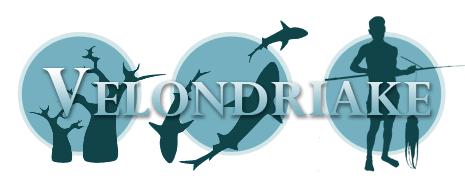
The Tahiry Honko project is based within the Velondriake locally managed marine area, and one of the hopes I had for the Velondriake Association was for them to become fully autonomous and be able to secure grants and funding independently of BV. To this end, I supported them with an application for a small grant from the Critical Ecosystem Partnership Fund to carry out conservation activities like mangrove replanting and forest patrols.
Their grant application was successful! A big step towards autonomy for the Velondriake Association, and a sign that they are ready for the responsibility of managing grants and planning conservation activities.
Since then, a mangrove management plan for the Tahiry Honko villages has been validated by the communities and regional authorities, and the dina (customary laws) for both the mangrove conservation and reforestation zones have been ratified and are now in force. The initial project documentation for the carbon project has also been approved by Plan Vivo.
Another big landmark for the Tahiry Honko project was its selection by IUCN as a Nature-based solution to climate change in a publication launched at the 2015 UNFCC, COP 21 in Paris! I presented at a side event organised by the IUCN, sharing the lessons learnt and the challenges in developing this project. Doing presentations like this is definitely one of the most exciting parts of my job.
From January 2018 my job title changed to Deputy National Blue Forests Programme Lead. How excited am I!
My journey with BV has taken me from consultations with coastal communities in remote villages in Madagascar to networking with international climate change policy makers in Paris, and I intend to stay until the miakatra ny soratra – the “end of the movies”.
The lessons learned and challenges overcome over the last 10 years has only increased my desire to share my experience with the communities we work with, and I am still full of enthusiasm to address the challenges of mangrove conservation in my country and maintain the important malagasy culture of mametraka lova hoan’ny taranaka faramandimby, meaning “leaving a heritage for future generations”.
Read about how our Blue Forests team are supporting mangrove conservation in the Bay of Assassins.
Our Madagascar volunteers helped coastal communities replant mangrove trees on World Mangrove Day.
Finally, we would like to thank all the partners, funders and staff that have supported our Blue Forests programme over this period.


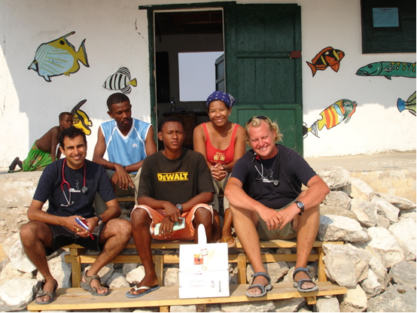
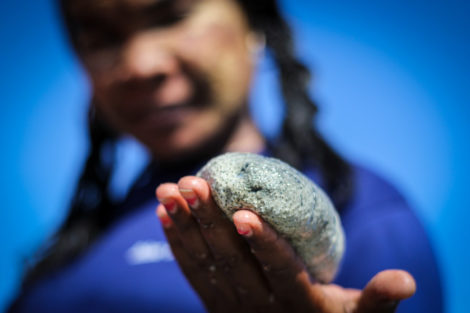
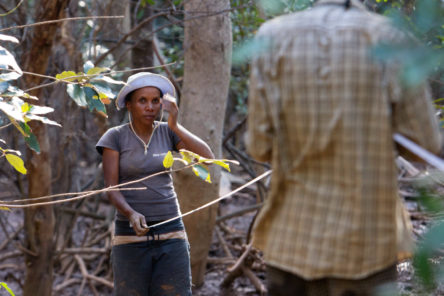
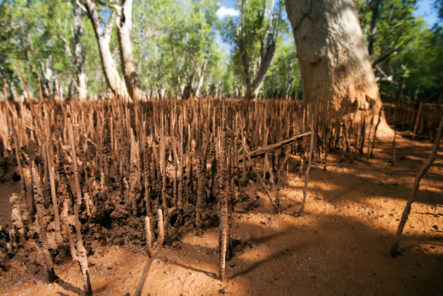
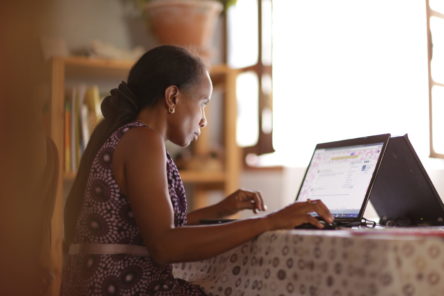
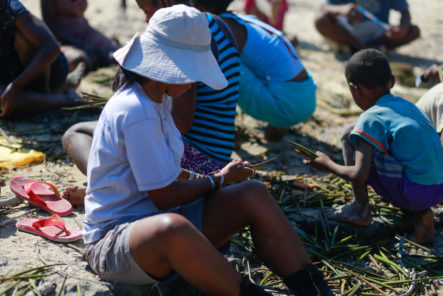
Dear Lalao,
What a pleasure it was to meet you and work with you in Madagascar this January.
You are an inspiration to us all!
With best wishes,
James